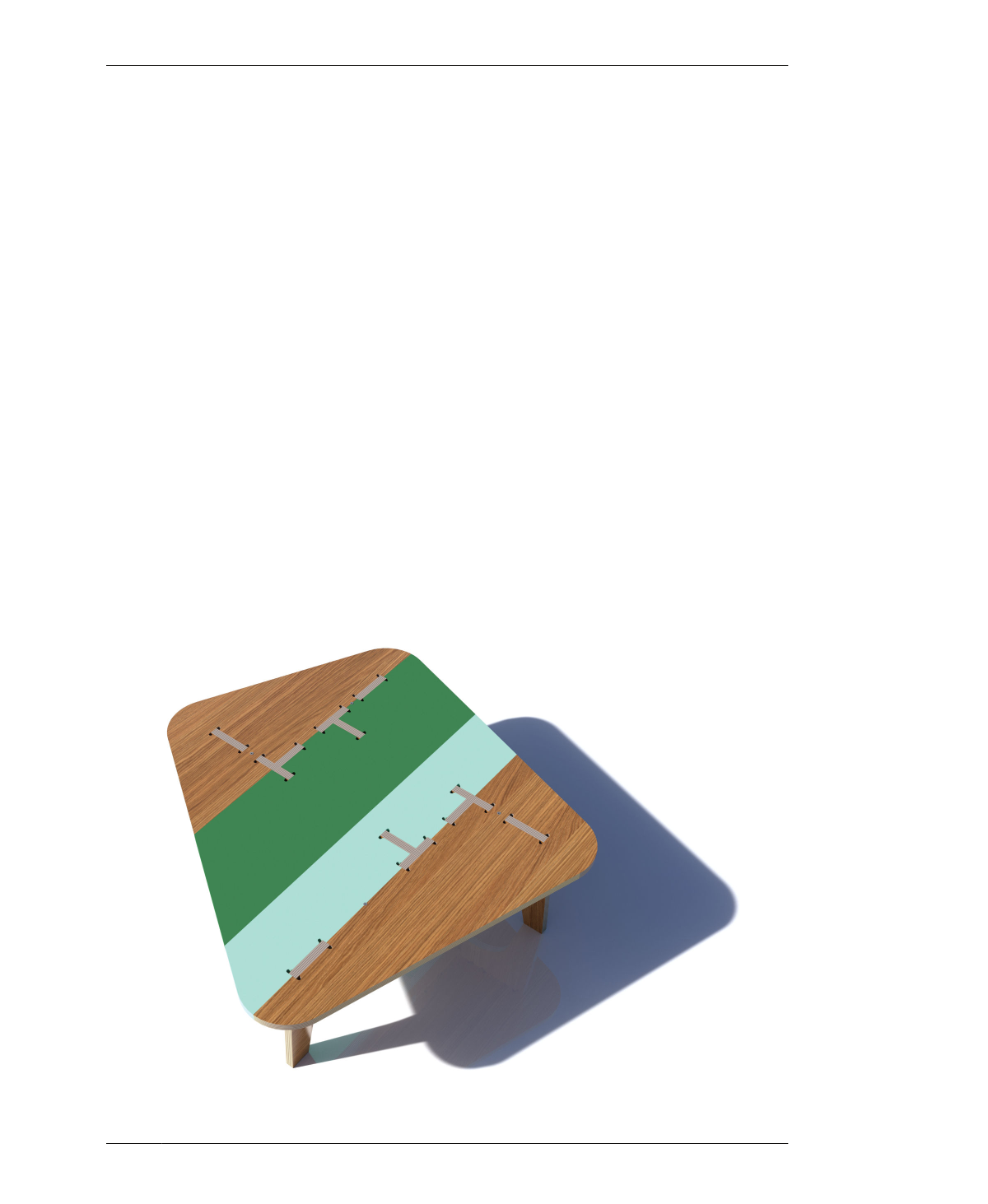
FINISHES FOR CNC PROJECTS
Translucent and Clear Coatings
Permanent clear finishes will protect parts from
dust and scratches, and sometimes even mois-
ture or sun exposure. Wipe-on acrylic and poly-
urethanes require multiple coats, but they soak
in and add a minimal thickness to cut parts.
When applied sparingly in advance of a clear
coat, stains, analine dye, and milk paint provide
a rich, translucent color that allows the grain to
come through.
Painting
Applying latex or oil paints is another option.
Spraying is much less labor-intensive than
working with a paintbrush, and allows you to
build up a painted coating, while controlling the
thickness. With a paint booth and some prac-
tice, it’s even possible to achieve a shiny, lac-
quered coat of hard-wearing enamel. Since
paint thickness affects the fit of joints, it’s
especially critical to paint test pieces and cali-
brate joints before cutting a final furniture
piece.
Color, Then Cut
Another way to introduce color into a project is
to prepaint the plywood sheets prior to cutting
parts on the CNC router. Allow the paint to
thoroughly dry or cure overnight, and the CNC
end mill leaves a very clean, crisp raw edge that
contrasts with the painted face.
Color Blocking
Color and finish also don’t necessarily need to
be applied to an entire piece of furniture. With
the help of masking or stencils, you can apply
color blocking, stripes, or patterns onto a furni-
ture piece after fabrication and assembly, as
shown in Figure 9-1.
FIGURE 9-1
Color-blocked table
09/CAT IN BAG II TABLE
211
